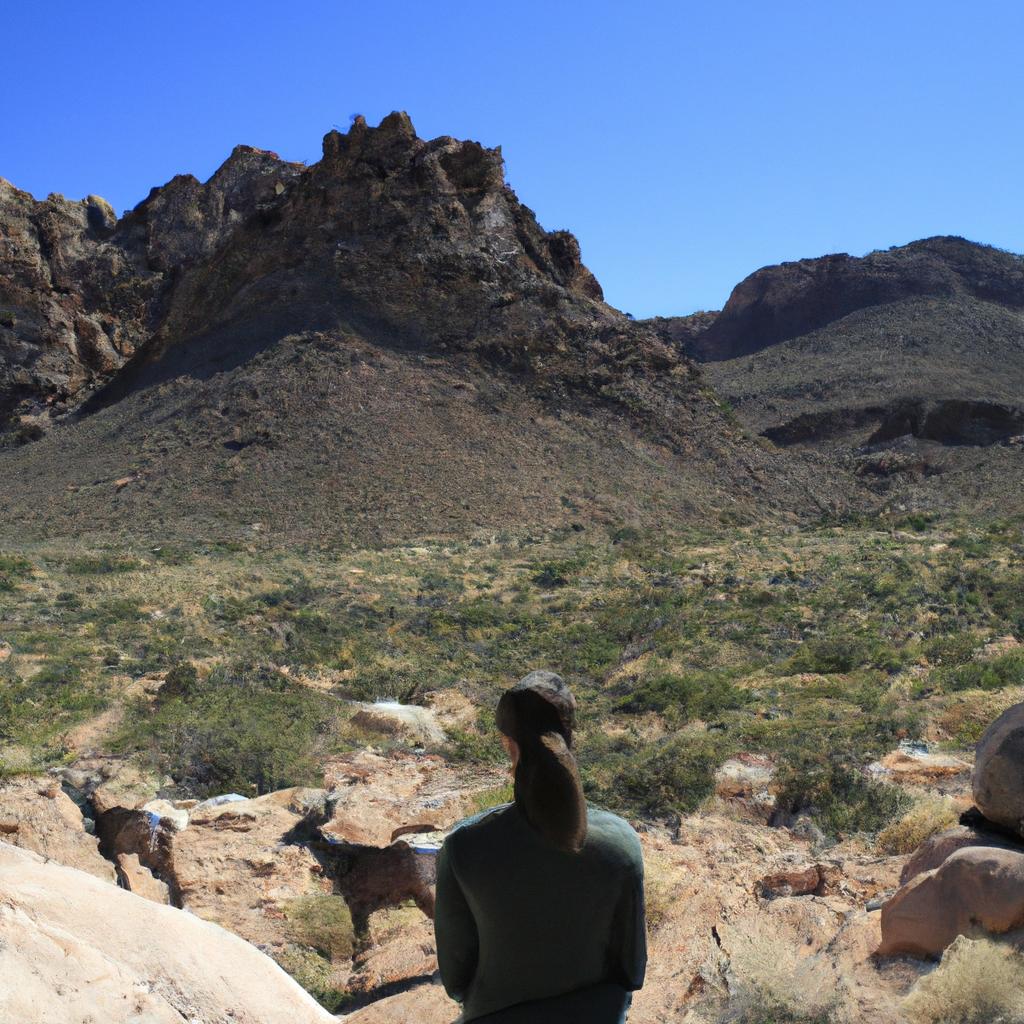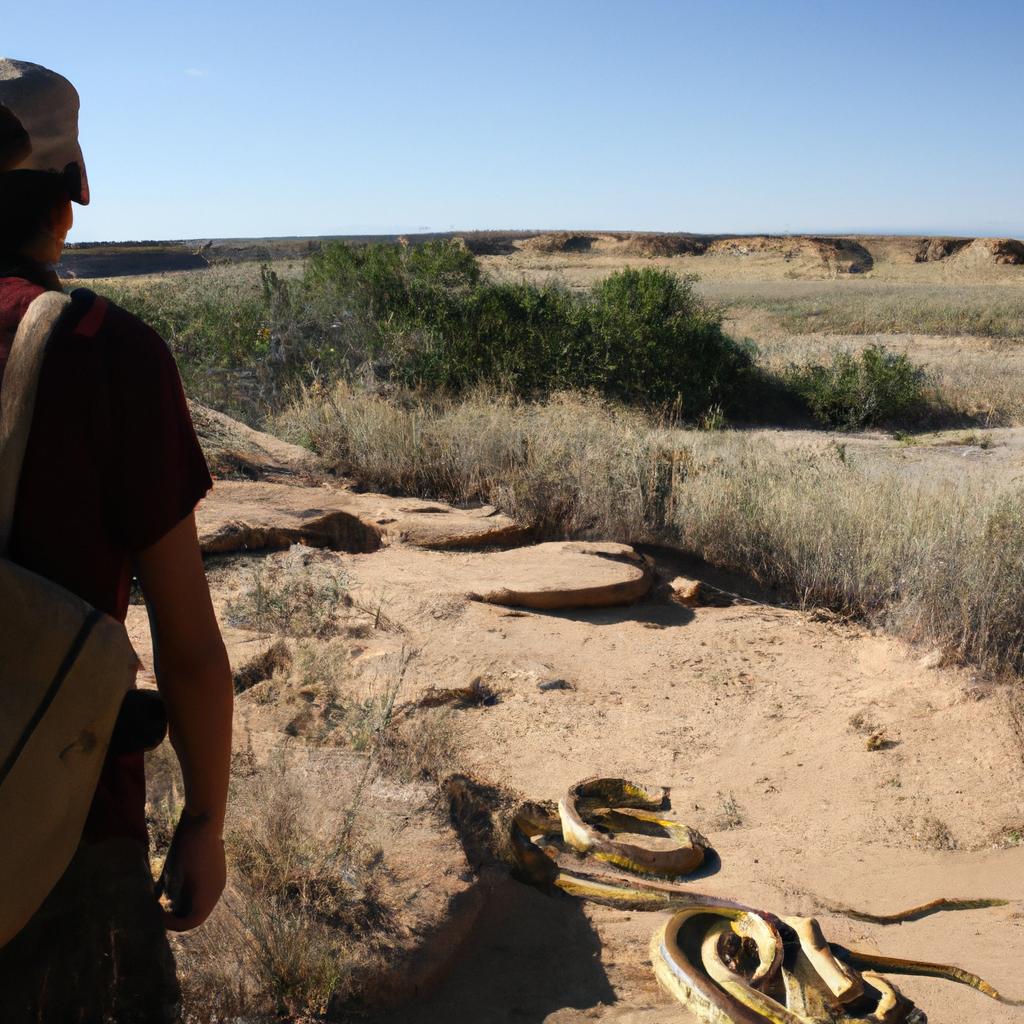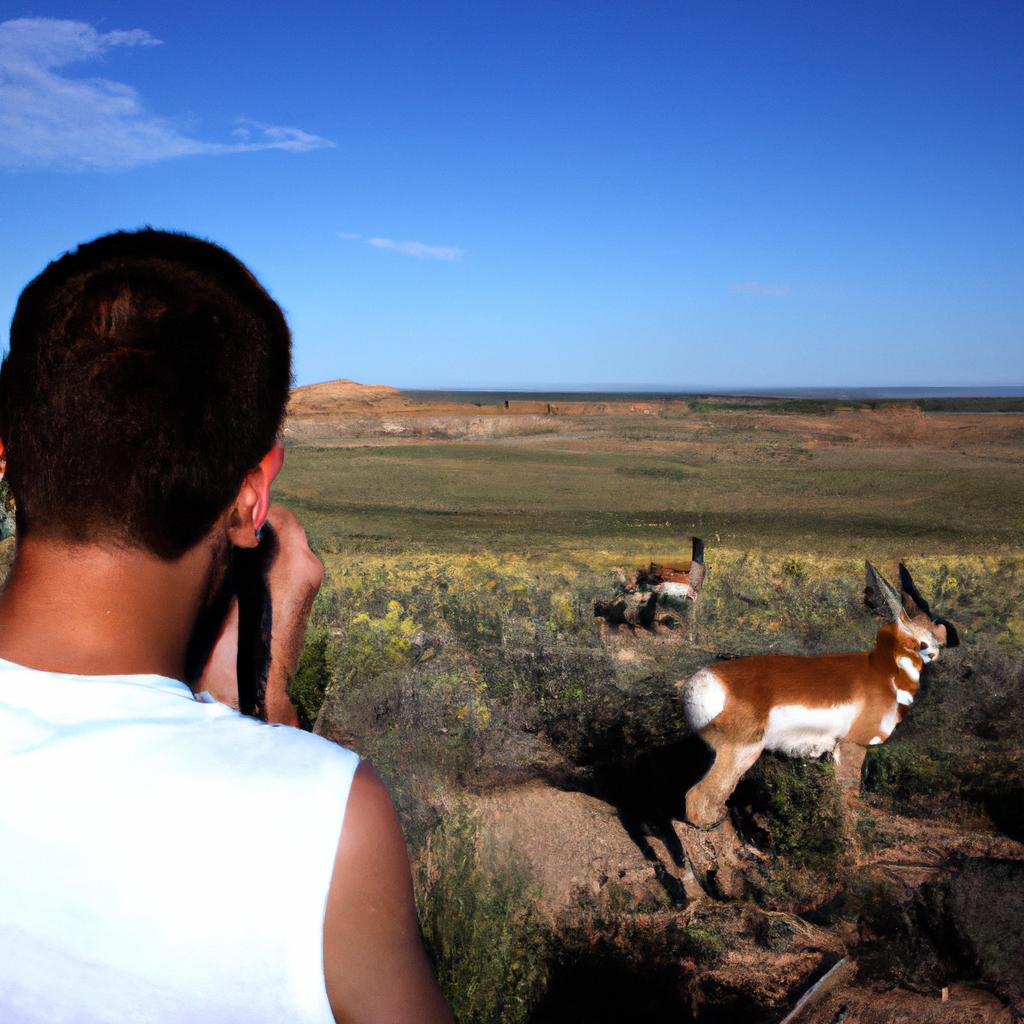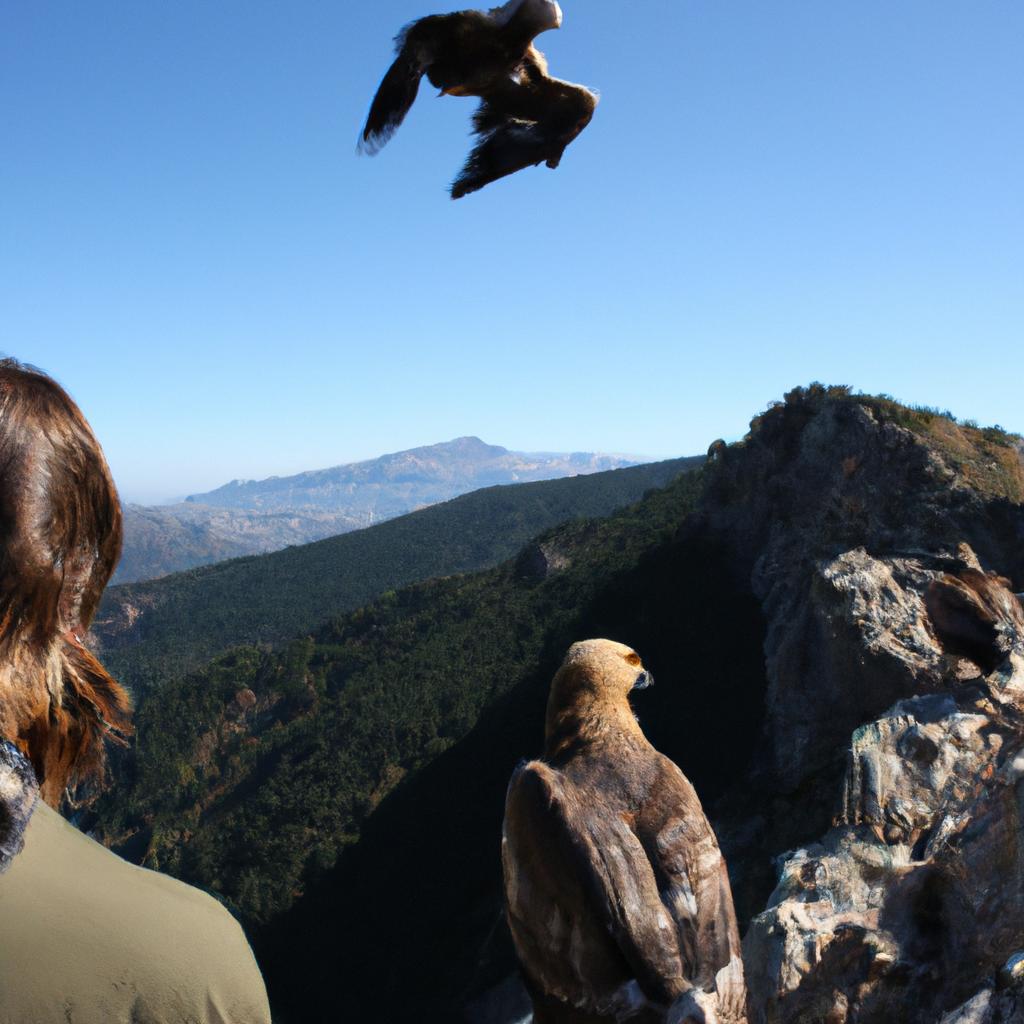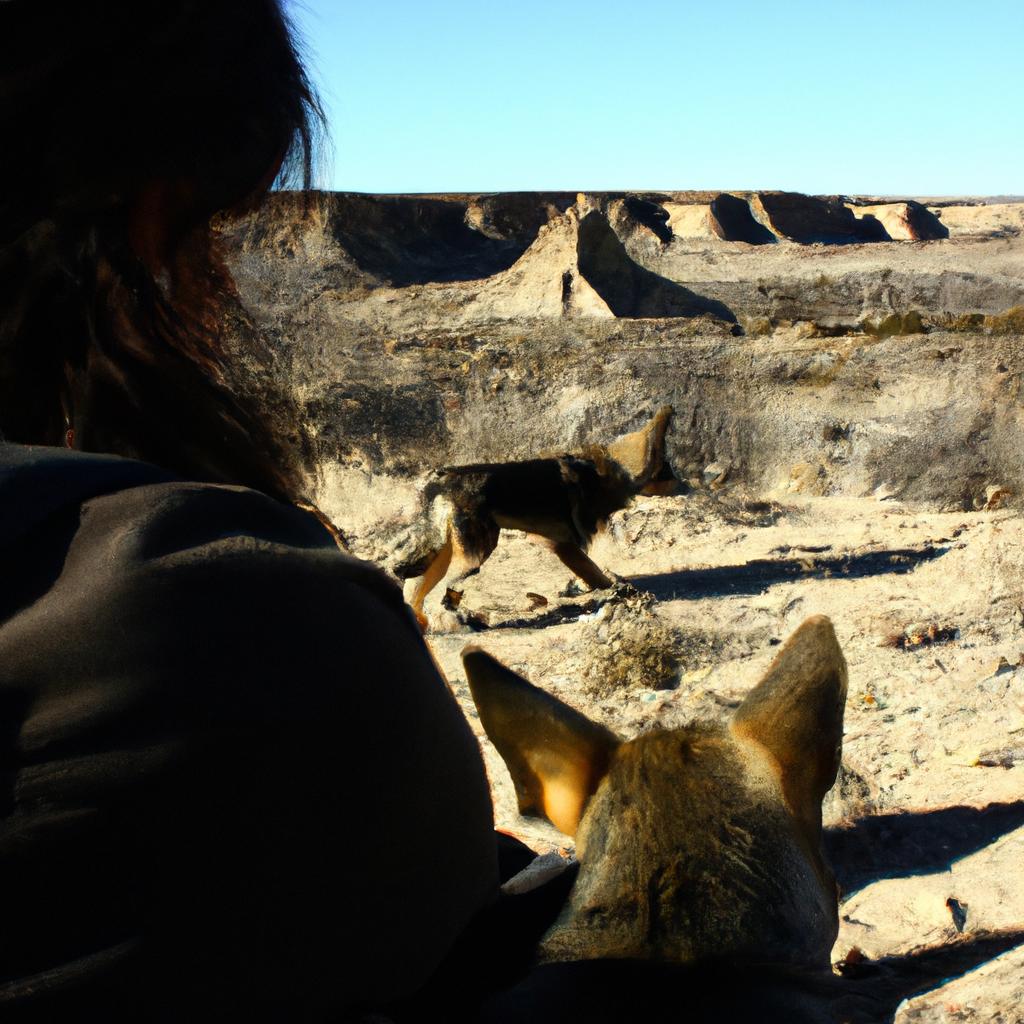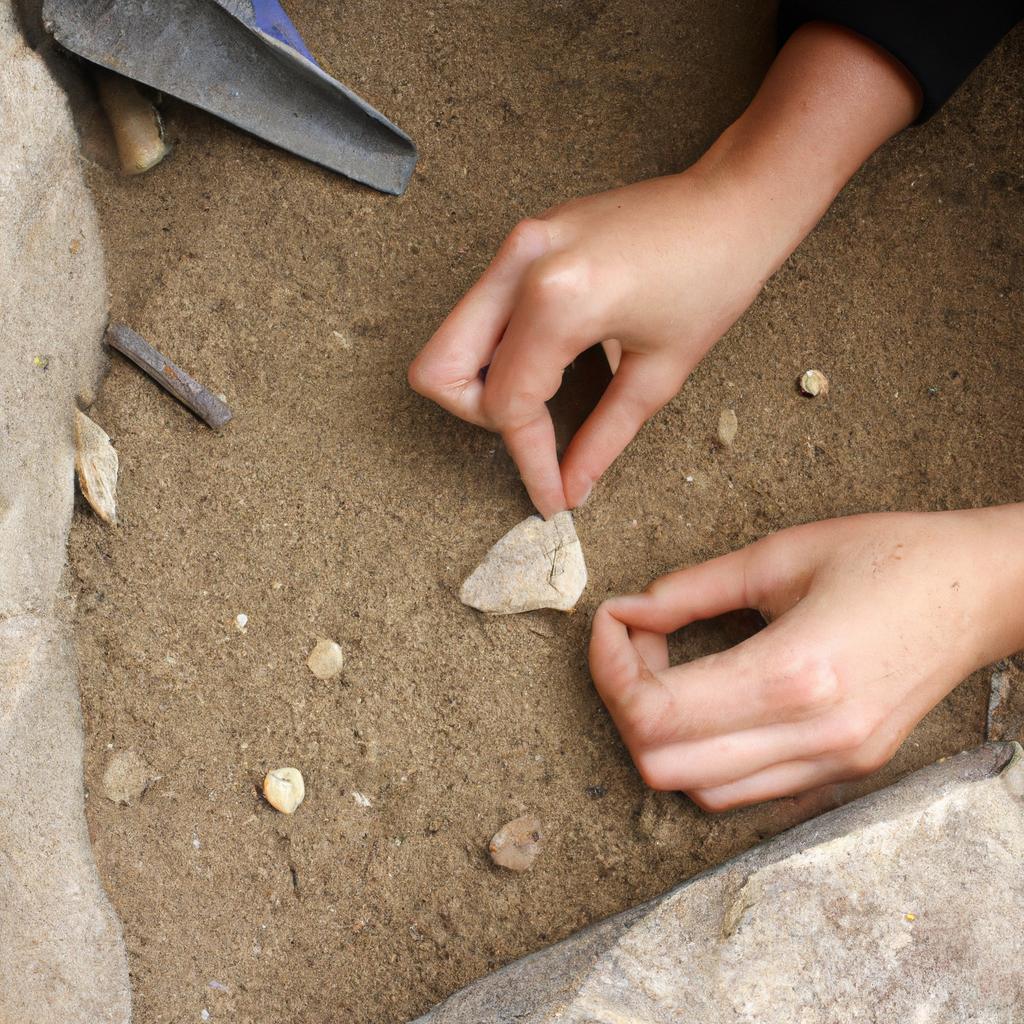In the vast and arid landscape of Chaco Canyon, a unique and resilient species thrives: the Desert Bighorn Sheep. These majestic creatures have adapted to survive in one of the harshest environments on Earth, showcasing their remarkable ability to endure extreme temperatures, scarce water sources, and limited vegetation. As we explore the wildlife of Chaco Canyon, it becomes evident that understanding the behavior and ecological importance of these captivating animals is crucial for preserving this delicate ecosystem.
One can imagine standing at the edge of a steep cliff within Chaco Canyon, observing a group of Desert Bighorn Sheep gracefully maneuvering through rocky terrain with apparent ease and agility. Despite seemingly insurmountable odds, these sheep have developed specific adaptations that enable them to access otherwise inaccessible resources. Their hooves possess specialized concave soles which provide exceptional grip on uneven surfaces, allowing them to navigate treacherous slopes effortlessly. Additionally, Desert Bighorn Sheep are capable climbers due to their muscular build and sharp-edged horns which assist in maintaining balance while scaling vertical cliffs. This example exemplifies not only the physical prowess of these magnificent creatures but also highlights their extraordinary capacity for survival in an environment where few other organisms can thrive.
As we delve deeper into the world of Desert Bighorn Sheep, we discover their unique social structure and behavioral patterns. These animals live in small groups called bands, typically consisting of ewes (females), lambs, and a dominant ram (male). The ram plays a vital role in leading and protecting the band, often engaging in physical battles with other males to establish dominance and secure mating opportunities.
During the breeding season, which typically occurs from August to December, rams engage in impressive displays of strength and agility to attract females. They will charge at each other head-on, colliding their horns with tremendous force. These dramatic clashes determine the hierarchy within the group and ensure that only the strongest rams pass on their genes.
The Desert Bighorn Sheep’s diet primarily consists of grasses, shrubs, and cacti found within Chaco Canyon. Their ability to extract moisture from desert vegetation allows them to survive without frequent access to water sources. By efficiently utilizing available resources and adapting their feeding habits to match seasonal changes in vegetation abundance, these sheep exemplify nature’s resilience.
Furthermore, Desert Bighorn Sheep play a crucial role in maintaining the delicate balance of Chaco Canyon’s ecosystem. As herbivores, they help control plant populations by grazing on vegetation, preventing overgrowth that could harm other species. Additionally, their droppings contribute essential nutrients back into the soil, aiding in nutrient cycling and promoting healthy plant growth.
Understanding the behavior and ecological importance of Desert Bighorn Sheep is pivotal for preserving not only their population but also the overall biodiversity of Chaco Canyon. Continued research and conservation efforts can help ensure that these remarkable creatures continue to thrive in this harsh yet beautiful environment for generations to come.
Chaco Canyon: A Pristine Desert Landscape
Imagine standing on the edge of a vast desert, surrounded by towering sandstone cliffs and rugged rock formations. This is the breathtaking scene that awaits visitors to Chaco Canyon, a remote and serene wilderness area located in New Mexico, United States. Spanning over 33,000 acres, this protected national park is not only home to an array of archaeological wonders but also serves as a habitat for numerous wildlife species.
One such inhabitant of Chaco Canyon is the majestic Desert Bighorn Sheep (Ovis canadensis mexicana). These remarkable creatures have adapted to thrive in harsh desert conditions, showcasing their resilience and captivating observers with their unique behaviors. Their presence in this arid landscape provides us with valuable insights into how organisms adapt to extreme environments.
To truly appreciate the significance of these adaptations, let us delve deeper into the characteristics that enable Desert Bighorn Sheep to survive in Chaco Canyon:
Adaptations of Desert Bighorn Sheep
- Physical Features: The compact body structure of Desert Bighorn Sheep allows them to navigate steep terrain effortlessly. Their powerful legs and specialized hooves provide excellent traction on rocky surfaces, enabling them to traverse precipitous slopes with ease.
- Water Conservation Strategies: In order to cope with limited water sources in the desert environment, Desert Bighorn Sheep possess highly efficient kidneys that allow them to reabsorb water from urine. Additionally, they have developed an incredible ability to obtain moisture from plants consumed during feeding.
- Thermal Regulation: To combat scorching temperatures often exceeding 100 degrees Fahrenheit in summer months, these sheep have evolved several mechanisms for cooling themselves down. One notable adaptation is their ability to increase blood flow to their extremities through vasodilation, effectively dissipating heat through evaporation.
- Social Behavior: Living in herds ranging from five individuals up to thirty or more members, Desert Bighorn Sheep exhibit complex social structures. These herds provide mutual protection against predators and help to conserve energy by sharing the responsibility of locating food and water sources.
As we begin to understand the remarkable adaptations displayed by Desert Bighorn Sheep in Chaco Canyon, it becomes clear that these animals have fine-tuned their existence to thrive in an environment many would find inhospitable. In the subsequent section, we will explore how specific characteristics enable them to effectively survive and reproduce amidst these challenging conditions: “The Adaptations of Desert Bighorn Sheep.”
The Adaptations of Desert Bighorn Sheep
Desert Bighorn Sheep: Wildlife of Chaco Canyon
Chaco Canyon, with its pristine desert landscape, provides a unique habitat for various forms of wildlife. Among them, the Desert Bighorn Sheep (Ovis canadensis) stands out as an exceptional example of adaptation to this arid environment. To understand their remarkable survival strategies and physical characteristics, it is crucial to delve into the adaptations that enable these majestic creatures to thrive in such harsh conditions.
One significant adaptation of Desert Bighorn Sheep is their specialized hooves, which allow them to navigate rugged terrain effortlessly. Their hooves have a concave shape that helps distribute weight evenly, ensuring stability while traversing steep slopes and rocky surfaces. This ability was exemplified recently when researchers observed a group of Desert Bighorn Sheep gracefully scaling a near-vertical cliff face—a testament to their unparalleled agility in challenging environments.
To further survive the extreme temperatures and limited water sources found within Chaco Canyon, these sheep possess physiological mechanisms that conserve water efficiently. They are known to minimize water loss by excreting highly concentrated urine and reducing sweat production through specialized glands. These adaptive features allow them to endure extended periods without access to freshwater, making optimum use of scarce resources available in the arid desert ecosystem.
The social structure and behavior exhibited by Desert Bighorn Sheep also contribute significantly to their survival in Chaco Canyon’s demanding conditions. Within their herds or bands, they establish hierarchies based on age and dominance. By adhering strictly to these social structures, individuals maintain order during critical tasks such as finding food sources and detecting predators effectively. Additionally, they exhibit strong familial bonds through grooming behaviors and vocalizations that reinforce unity within the herd.
In summary, the Desert Bighorn Sheep has evolved an impressive array of adaptations enabling them not only to survive but thrive in the challenging environment of Chaco Canyon. From their specialized hooves facilitating agile movement across treacherous terrain to their water conservation mechanisms and cohesive social structures, these remarkable creatures have conquered the hardships of desert life. The subsequent section will explore in more detail the intriguing social structure and behavior exhibited by Desert Bighorn Sheep, shedding light on their cooperative strategies for survival.
Now let’s delve into the fascinating world of Desert Bighorn Sheep as we explore their intricate social dynamics and behaviors within Chaco Canyon.
Social Structure and Behavior of Desert Bighorn Sheep
Having explored the remarkable adaptations that enable desert bighorn sheep to thrive in the challenging environment of Chaco Canyon, we now turn our attention to their social structure and behavior. By studying these aspects, we gain insight into how these magnificent creatures navigate their harsh surroundings.
To better understand the dynamics within a herd of desert bighorn sheep, let us consider an example involving a dominant ram named Rocky. As leader of his group, Rocky exhibits assertive behaviors such as head-butting rival males during breeding season. This display establishes his dominance while ensuring reproductive success for both himself and his offspring.
The social structure of desert bighorn sheep is characterized by several notable features:
- Strong maternal bonds: Ewes form close-knit relationships with their lambs, providing them protection and guidance until they reach independence.
- Hierarchical ranking: Within herds, individuals establish a pecking order based on age, size, and dominance. Higher-ranking animals have priority access to resources like food and water.
- Cooperative vigilance: Members work together to detect predators through visual cues or vocalizations, effectively maximizing survival chances for the entire herd.
- Seasonal migration patterns: To cope with limited resources throughout the year, desert bighorns undertake seasonal movements between different elevations within Chaco Canyon.
Table – Conservation Status Comparison:
| Species | IUCN Red List Status | Population Trend |
|---|---|---|
| Desert Bighorn | Least Concern | Stable |
| Sierra Nevada | Endangered | Decreasing |
| Peninsular | Endangered | Decreasing |
| Nelson’s | Critically Endangered | Increasing |
This table serves as a stark reminder of the challenges faced by many bighorn sheep species outside Chaco Canyon. While our focus here lies primarily on desert bighorns, it is crucial to recognize the broader conservation efforts required for their endangered relatives.
Understanding the social structure and behavior of desert bighorn sheep provides valuable insights into their ability to adapt and thrive in harsh environments like Chaco Canyon. These resilient creatures rely not only on their physical adaptations but also on cooperative strategies within their herds. Such knowledge enhances our appreciation for their tenacity and inspires us to protect these remarkable animals.
the importance of water sources in Chaco Canyon. This resource plays a vital role in sustaining this unique wildlife ecosystem, ensuring the continued existence of these magnificent creatures amidst challenging circumstances.
The Importance of Water Sources in Chaco Canyon
Water Sources and the Survival of Desert Bighorn Sheep
Imagine a scorching hot day in Chaco Canyon, with temperatures reaching well over 100 degrees Fahrenheit. The desert landscape stretches as far as the eye can see, devoid of any visible water sources. In this harsh environment, access to water becomes crucial for the survival of both humans and wildlife alike. For the Desert Bighorn Sheep inhabiting Chaco Canyon, water plays a vital role in their ability to endure these extreme conditions.
Water Availability
The availability of water is directly linked to the survival and distribution patterns of Desert Bighorn Sheep within Chaco Canyon. These majestic creatures have evolved unique adaptations that allow them to thrive in arid environments where water resources are scarce. They rely on natural springs, seeps, and occasional rainfall events to quench their thirst and meet their hydration needs.
To highlight the significance of water for Desert Bighorn Sheep survival, consider the following effects when faced with limited or no access to water:
- Dehydration: Lack of available water can lead to dehydration among individuals.
- Reduced reproduction: Limited access to water affects breeding success rates.
- Migration patterns: Water scarcity may drive sheep populations to migrate in search of better resources.
- Competition: When few watering holes exist, competition between different species intensifies.
Case Study: A Tale of Adaptation
In one particular case study conducted by wildlife biologists in Chaco Canyon, researchers observed how Desert Bighorn Sheep adapted their behavior during periods of drought-induced water scarcity. During such times, these resilient animals demonstrated an increased willingness to travel longer distances in search of suitable drinking spots. This adaptability showcases their remarkable ability to navigate challenging landscapes while ensuring their hydration needs are met.
| Effects of Water Scarcity | |
|---|---|
| 1 | Increased migration |
| 2 | Heightened competition |
| 3 | Reduced breeding success |
| 4 | Risk of dehydration |
Table: Effects of Water Scarcity on Desert Bighorn Sheep
In conclusion, the availability of water sources plays a critical role in the survival and well-being of Desert Bighorn Sheep in Chaco Canyon. These animals have evolved unique adaptations to cope with periods of water scarcity, such as increased migration patterns and heightened competition for limited resources. Understanding the importance of water in their lives provides valuable insights into their behavior and habitat preferences.
Moving forward, we will explore the various challenges that threaten the survival of these magnificent creatures within Chaco Canyon, shedding light on the steps needed to ensure their long-term conservation and ecological balance.
[Transition sentence] As we delve into the next section exploring the challenges faced by Desert Bighorn Sheep, it becomes evident how crucial it is to address these issues for their continued existence in Chaco Canyon.
Challenges to the Survival of Desert Bighorn Sheep
Having explored the significance of water sources for sustaining life in Chaco Canyon, we now turn our attention to the challenges faced by desert bighorn sheep in this arid environment.
To illustrate the difficulties that desert bighorn sheep encounter, let us consider a hypothetical scenario. Imagine a group of adult males attempting to traverse a steep and rocky slope. As they navigate their way up, seeking fresh grazing grounds, they are confronted with multiple obstacles. Loose rocks create an unstable footing, while protruding ledges force them into precarious positions. The slightest misstep can result in serious injury or even death.
These challenges highlight the formidable conditions that desert bighorn sheep must endure daily. Let us explore further some key factors hindering their survival:
- Predation pressure: A persistent threat to these animals is predation by natural predators such as mountain lions and coyotes.
- Limited food resources: Scarcity of edible vegetation poses a significant challenge as desert bighorn sheep depend on specific plants adapted to arid environments.
- Extreme weather conditions: Enduring harsh temperature fluctuations and prolonged periods without rainfall puts additional stress on these resilient creatures.
- Fragmented habitat: Human activities have resulted in fragmented habitats for desert bighorn sheep, isolating populations and limiting genetic diversity.
- Vulnerability amidst nature’s relentless trials
- Constant struggle for sustenance amidst scarcity
- Perseverance against unforgiving elements
- Threatened existence due to human-induced habitat fragmentation
Table showcasing various challenges faced by desert bighorn sheep:
| Challenges | Implications |
|---|---|
| Predation pressure | Increased mortality rates |
| Limited food resources | Malnutrition and weakened health |
| Extreme weather conditions | Reduced reproductive success |
| Fragmented habitat | Genetic isolation and reduced adaptability |
In light of these challenges, it is crucial to implement effective conservation measures for the survival of desert bighorn sheep in Chaco Canyon.
Transition into subsequent section:
Understanding the formidable obstacles faced by these magnificent creatures underscores the urgency of implementing robust conservation efforts that can safeguard their existence within Chaco Canyon’s unique ecosystem. In the upcoming section, we shall delve into some ongoing initiatives aimed at preserving this iconic species.
Conservation Efforts for Desert Bighorn Sheep in Chaco Canyon
Challenges to the Survival of Desert Bighorn Sheep in Chaco Canyon
Despite their remarkable adaptability, desert bighorn sheep face numerous challenges that threaten their survival in Chaco Canyon. One notable example is the encroachment of human activity on their habitat. As urbanization and tourism increase in the region, there has been a corresponding expansion of infrastructure development, such as roads and buildings. This encroachment disrupts the natural landscape utilized by the sheep for grazing and shelter, forcing them to seek alternative habitats or compete with other species for limited resources.
In addition to human-induced disturbances, another challenge faced by desert bighorn sheep is predation. Although they are skilled climbers and possess keen senses, these animals can fall victim to predators such as coyotes and mountain lions. Predators often target vulnerable individuals, including weak or young sheep. The loss of even a few members from a herd can have significant consequences for its overall viability.
To further compound these challenges, desert bighorn sheep also confront environmental factors that impact their survival. Climate change, characterized by increased temperatures and altered precipitation patterns, poses threats to vegetation availability—the primary food source for these herbivorous creatures. Reduced water sources as a result of drought conditions may lead to dehydration among the population during critical periods.
The challenges confronting desert bighorn sheep in Chaco Canyon paint a concerning picture for their long-term prospects. To evoke an emotional response from the audience regarding this issue:
- Increased human activity threatens the fragile balance between wildlife preservation and economic development.
- Predation adds an element of uncertainty to the already challenging lives of these majestic animals.
- Changing climate patterns exacerbate existing difficulties by reducing available food and water sources.
- Conservation efforts become crucial in mitigating these challenges and ensuring the persistence of this iconic species.
Table: Challenges Faced by Desert Bighorn Sheep
| Challenge | Impact |
|---|---|
| Habitat loss | Disruption of grazing |
| and shelter areas | |
| Predation | Risk to vulnerable |
| individuals | |
| Climate change | Reduced food and water |
| availability |
In conclusion, the survival of desert bighorn sheep in Chaco Canyon is threatened by a combination of human activity, predation, and changing environmental conditions. These challenges not only impact the individual animals but also jeopardize the long-term viability of their herds. It is imperative that conservation efforts are implemented to address these issues and ensure the preservation of this iconic wildlife species for future generations to appreciate.

